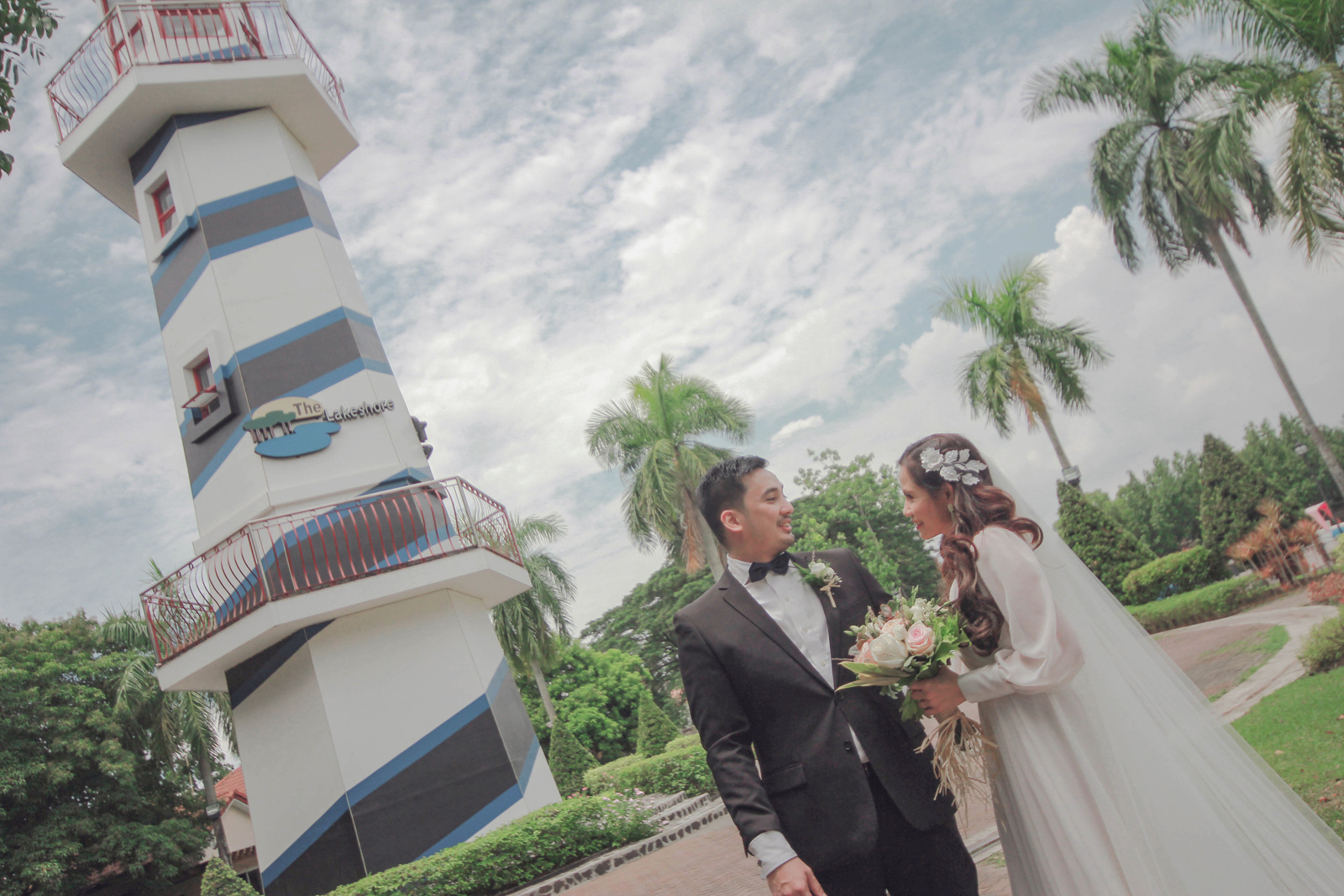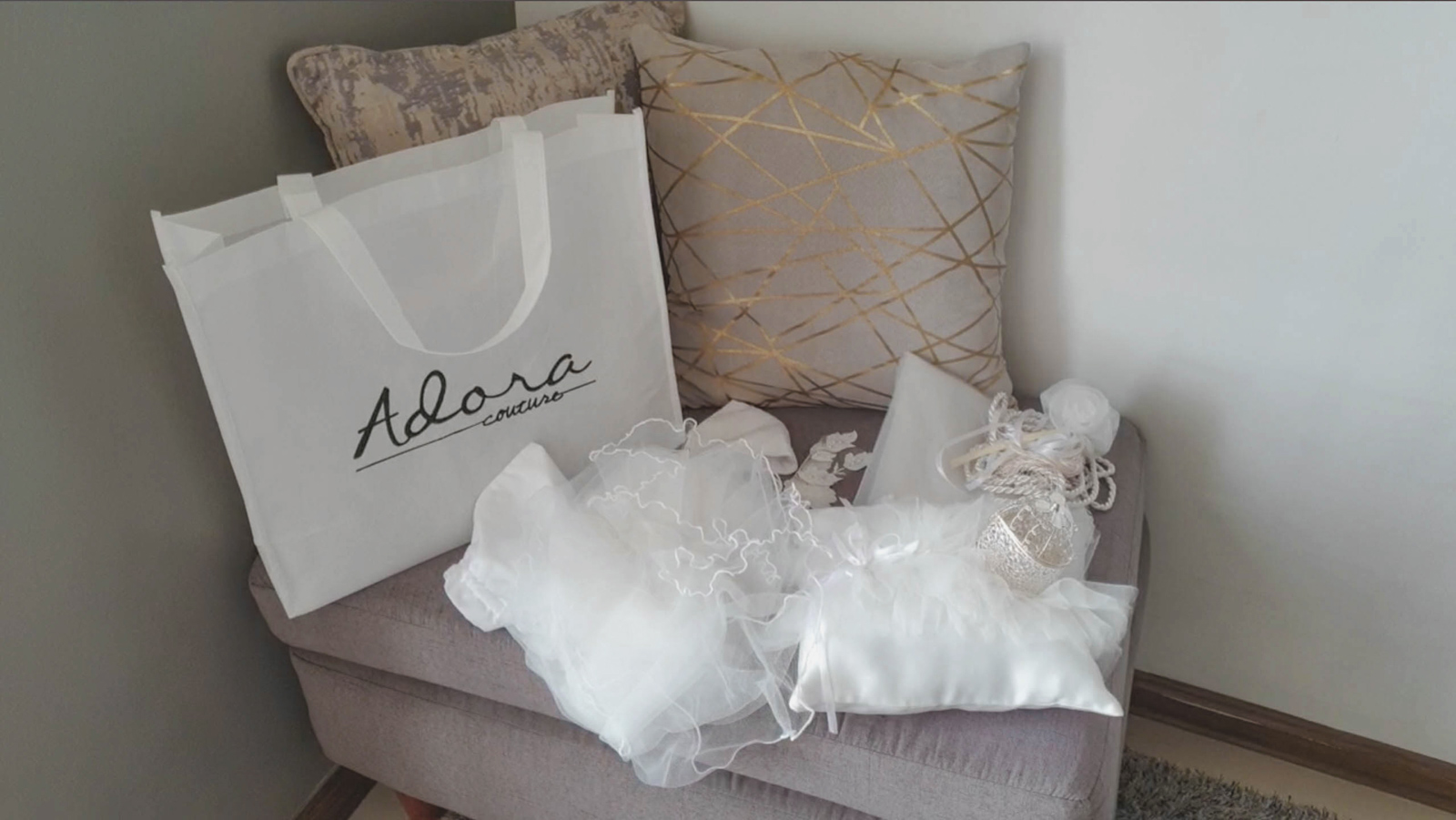We use cookies to ensure you get the best browsing experience. By continued use, you agree to our privacy policy and accept our use of such cookies. For further information, click FIND OUT MORE.
We all know few things take as much meticulous planning as a wedding. There’s a long to-do list and many variables to consider. But if there’s one thing we’ve also come to know amid the COVID-19 pandemic, it’s that things can come without warning and it’s up to us what to make of it.
I started on the COVID beat in January, when we were dealing with the Taal volcano’s tantrums and dreading a cataclysmic eruption. Many — the government included — had shrugged off this erstwhile-novel coronavirus in Wuhan, China back then, perhaps thinking it would come and go, the way tropical cyclones pass us by.
But 10 months, 300,000 cases and 5,000 deaths later, the Philippines is still weathering its longest storm yet. A giant sucker punch that hit everyone’s plans, square in the face.
Our plans were not so meticulous, though. And that’s how we pulled off our wedding in the middle of a pandemic.



It helped that it was not our first wedding. My husband Anton proposed in January 2018, shortly before we left for New York to explore opportunities in the United States. In June, we toyed with the idea of getting married at City Hall. Why not?
That was on the 21st. We got our marriage license on the 26th, and got married on the 29th. We put together our outfits the night before, most of them brought from Manila. We brought the dress ($70), bridal bag ($20) and dress shirt from a bargain department store called Century 21 (now sadly in the process of filing bankruptcy due to the pandemic), and pre-owned PRADA shoes ($34.95 and originally worth about $1,800) from an ukay-ukay chain called Beacon’s Closet. And because haircuts are ridiculously expensive in New York, I cut Anton’s hair myself.
We had become fast friends with a Filipino couple from New Jersey, Mark and Beanne. As soon as we decided to get married, we knew they’d be the ones we ask to be our witnesses — kind, wonderful people with whom we were at ease. (With relatives spread out in the US, we didn’t have the time or resources to organize everything in a way that’s fair and drama-free.)



We took photos on Brooklyn Bridge as tourists walked or cycled past. It was a sweltering summer day, but we didn’t mind. For “reception,” Mark and Beanne treated us to a place called Clinton Hall, near South Street Seaport in Manhattan’s financial district. Our “wedding cake” was called WTF Waffle (red velvet with lots of things on it). We had burgers, sangria and kamote fries with marshmallow dip. We played Connect Four for a bit and went back to regular programming after lunch.
We didn’t get rings. We figured we would still have to do a “real” wedding in church in June the following year, with a traditional ceremony and surrounded by a few hundred guests. After all, we’re both panganay and the first ones in our families to get married.
Asking “Why not?” helped us pull off that perfect day, and we’d learn how important it is as we planned our church wedding.



After we went back to the Philippines in January 2019, we decided to reschedule our church wedding from June to December to buy us more time.
We started with our videographer, Jason Magbanua. As a video producer myself, I didn’t want to be working on my own wedding, worrying about whether or not the video team is doing things right.
Next, we had to choose a location that would be logistically easy for everyone. Certainly not in the gridlocked streets of Manila, but not in far-flung places either. Somewhere near the airport and hotels for our guests from abroad. A place where the church would be very near the reception venue. A location with a beautiful church and scenic surroundings for an easier shoot. We chose Lakeshore, which happens to be 20 minutes from our home in Pampanga.
In March, I got my current job as a reporter for GMA’s pioneering multimedia journalism newscast Stand for Truth, while Anton was working as a freelance software engineer. It wouldn’t be until July, on a random weekend of running errands, that we would chance upon a wedding fair at the mall and book our next supplier (just the cake).
A garden display caught our eyes as we made our way out. We stopped to take photos and a kindly lady at that booth chatted us up and gave us floral tea. It was warm and sweet, like her. We ended up befriending — and booking — Tita Aida Lazatin to be our florist and event stylist.
We mentioned that we were having a hard time deciding who among our makeup artist friends we’d book. We didn’t like the idea that they would be working at our wedding instead of enjoying as guests. But we also wanted to work with someone we’re comfortable with. Tita Aida made that decision easier: she brought us to the booth of her trusted friend Dey Caisip. His work portfolio and personality won us over, and we had booked our hair and makeup.
And then work got more hectic. No other suppliers were booked. No save-the-dates were sent out. We rescheduled (again) to June 2020, prepared to either pay penalties or look for other suppliers in case the ones we had were unavailable then. We resolved to see it through this time, no matter what.
Of course, 2020 had other plans: Between a brewing volcano and a brewing pandemic, we thought we might need to give up on getting married in church anytime soon, especially after the entire country was placed on lockdown in March.
Instead of us, it was my sister, a lawyer currently studying in Brisbane, who got married in June. It was a simple ceremony held on their university grounds, in front of a handful of friends and witnessed live by the rest of us via Zoom.
Seeing how much fun it was despite the circumstances helped us with our decision to finally push through with ours. We scheduled to meet with the Lakeshore team and the parish priest a day after that wedding.
















On July 11, the Philippines reported 54,222 total COVID-19 cases. Just a month after our wedding, Metro Manila had to be placed back under MECQ for two weeks to give the burdened health workers a “time-out.” Today, the number of total cases has reached over 300,000 and there seems to be no end in sight.
In a meeting with President Rodrigo Duterte last month, Health Secretary Francisco Duque III noted that while COVID-19 numbers are on a downward trend, they are heeding the advice of experts against reopening the country, as it may lead to a surge in infections by Christmas time.
If we had put off our wedding yet again to wait until things are better, chances are we’d still be in the middle of planning it until now.
“Sometimes the best plan is no plan.” A childhood friend once reminded me this when I shared with her some anxieties about the future. It’s certainly not applicable to policymakers and elected officials—no plan is what led us to the longest lockdown in the world and confusing community quarantine guidelines.
But in our case, not being obsessed with the ultimately-insignificant details and just going with the flow enabled us to pull off our civil and church weddings the way we truly wanted: bare-bones and intimate.
Our immediate families were there, and everyone else we wanted to invite had sent us their well-wishes and gifts online. We had good food and good times, without the social pressures and stereotypical trappings of a traditional Filipino wedding that the introverts in us would have found a challenge. We got the suppliers we wanted, friends whose work we were already familiar with (thus sparing us from trial-and-error) and who went out of their way for us on such short notice.
We didn’t livestream the wedding so that Jason could shoot it and tell our story properly. He weaved New York and Pampanga together beautifully, and we wouldn’t have had it any other way.



And when they’re meant to, they fall into place.
More from Shai Lagarde: ‘Why Couldn’t We Do Mass Testing?’ and Other Frequently Asked Questions on the COVID-19 Beat, Answered
More nuptials: A Filipino Wedding